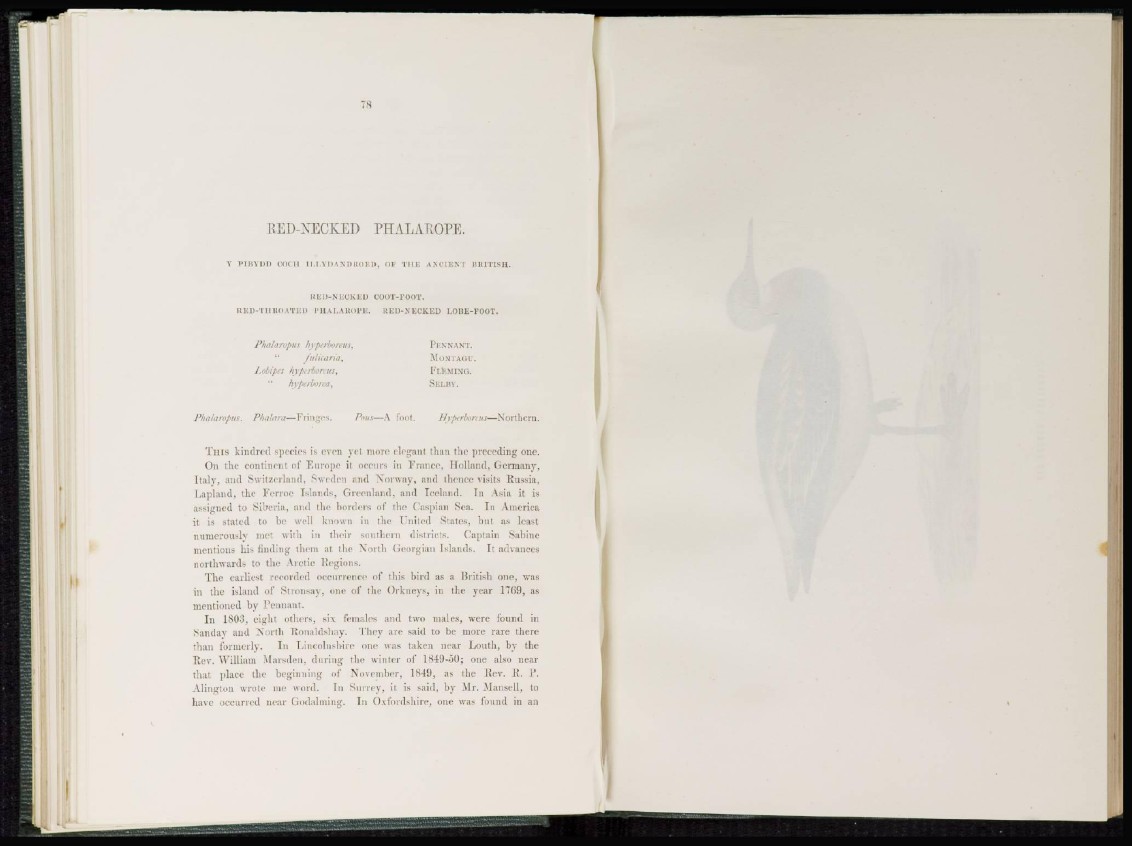
T8
RED-NECKED TOTAL Alt OPE.
V P I B Y D D COCH II,I.YD A Nil It I) Kit, OF T H E ANCIENT BRITISH..
B E D - N ECKED COOT-FOOT,
I! B D-1 II RO \ T i : n P H A L A R O P E , R E D - N E C K E D LOBE-FOOT.
Phalaropus hyperbortus, PENNANT.
fulkaria, MONTAGU .
I. obi pes hyp,rboreus, FLEMING.
" hyperbona, SELHY.
Phalaropus. Phalara—Fringes. Pons—A FOOT. Hyfxrbortus—NORTHERN.
T H I S kindred species is even yet more elegant than the preceding one.
On the continent of Europe it occurs in France, Holland, Germany,
I t a l y , and Switzerland, Sweden and Norway, and thence visits Russia,
Lapland, the Ferroe Islands, Greenland, and Iceland. In Asia it is
assigned to Siberia, and the borders of the Caspian Sea. In America
it is stated to be well known in the I nited States, but as least
numerously met with in their southern districts. Captain Sabine
mentions his finding them at the North Georgian Islands. It advances
northwards to the Arctic Regions.
The earliest recorded occurrence of this bird as a British one, was
in the island of Stronsay, one of the Orkneys, in the year 1769, as
mentioned by Pennant.
I n 1803, eight others, six females and two males, were found in
Sandav and North Ronaldshay. They are -aid to be more rare there
than formerly. In Lincolnshire one was taken near Louth, by the
Rev, William Marsden, during the winter of 1849-50; one also near
that place the beginning of November, 1849, as the Rev. R. i*.
Alington wrote me word. In Surrey, it is said, by Mr. Mansell, to
have occurred near Godalming. In Oxfordshire, one was found in an